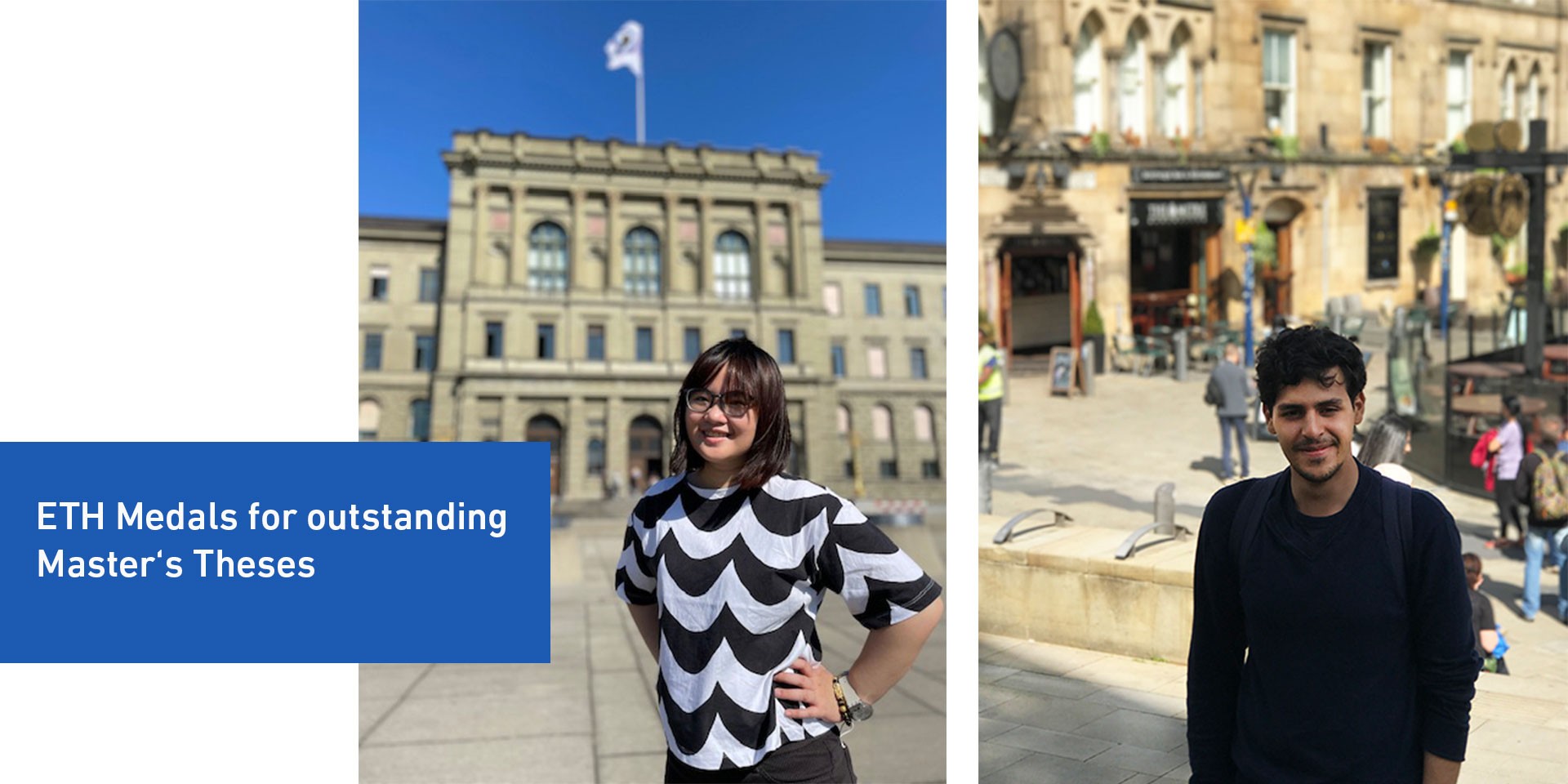ETH-Medals for Master's graduates
Madeleine Santos and Ali Ahmed Shaikhsulaiman were honoured with the ETH-Medal for their outstanding Master's theses. The prizes were awarded at this year's Master's degree graduation ceremony. Congratulations!

Tracking Holocene sea ice and paleoenvironment evolution in the Beaufort Shelf, Arctic Ocean
In her Master's thesis, Madeleine Santos explored organic molecules preserved in the sediments of the Beaufort Sea:
Arctic sea ice is a crucial component of the Earth's climate system and, prior to its recent rapid decline, understanding its long-term variability is crucial to forecast future evolution. By analyzing the sediments of the Beaufort Sea (a coastal sea of the Arctic Ocean), I explored preserved organic molecules in the sediments which came from a vast number of organisms—including sea ice diatoms, bacteria in the Mackenzie delta, and marine plankton. These molecules, known as lipid biomarkers, were key tools in my thesis, revealing the Beaufort Sea's environmental evolution over 12,000 years. I learned that modern Beaufort sea ice formed around 8,000 years ago, influenced by lower sea surface temperatures and meltwater from the decaying Laurentide ice sheet. Despite constituting less than 1% of the sediments analyzed, these biomarkers have provided such valuable insights. This highlights the significance of these unique tools that I am happy to have acquired in my geologic toolbox for future (paleo)climatology work.
The Master's thesis was supervised by Dr. Lisa-Marie Bröder
Full-waveform Ambient Noise Inversion In Istanbul Using DAS - «Proof of concept»
In his Master's thesis, Ali Ahmed Shaikhsuleiman leveraged pre-existing telecommunication fibers for seismic sensing, utilizing anthropogenic vibrations to create a detailed 2D model of subsurface geology:
The integration of fiber-optic sensing and advanced subsurface imaging technique, namely Full Waveform Inversion, marks a significant advancement in seismological research. By deploying a 30-kilometer-long fiber optic cable in Istanbul, the system recorded seismic signals during significant events, including the earthquakes of February 6th in Turkey and Northern Syria. The system recordings, spanning 43 days, allowed for the identification of diverse seismic and urban signals across a broad frequency range. The focus on urban noise signals (3-40Hz) revealed various noise sources along the cable, leading to the creation of an initial 2D shallow shear wave velocity model. This model highlighted a layer with slow shear wave velocity and provided insights into subsurface geology. The utilization of waveform inversion in the last one-kilometer segment enhanced the model, showcasing a trend of slowing down in shallow depths and speeding up in deeper sections. Despite starting with simplified assumptions, this project establishes a functional workflow and tools for ambient noise waveform inversion, contributing not only to seismological research but also laying the foundation for future subsurface evaluations and detailed earthquake hazard assessments using existing infrastructures.
The Master's thesis was supervised by Prof. Andreas Fichtner.
